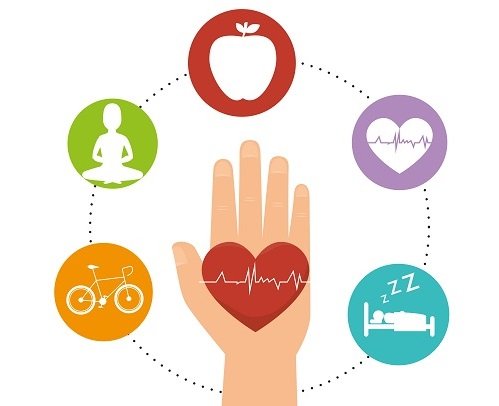Achieving Work-Life Integration: Fifteen Strategies for Enhanced Well-being
The contemporary landscape presents individuals with the constant challenge of balancing professional demands and personal well-being. Achieving a healthy work-life integration, rather than merely a balance, is paramount for both physical and mental health, significantly impacting overall life satisfaction and success. This article proposes fifteen actionable strategies grounded in established organizational behavior and stress management theories to cultivate effective habits and achieve a more harmonious existence. Key concepts, such as time management, boundary setting, and stress reduction techniques, will be explored within the framework of achieving optimal well-being.
1. Strategic Time Management: Effective time allocation is fundamental. Employing time management techniques like the Eisenhower Matrix (urgent/important), one can prioritize tasks, minimizing feelings of overwhelm and ensuring crucial activities receive adequate attention. This structured approach aligns with the principles of efficiency and productivity advocated by scientific management theory.
2. Defining and Maintaining Boundaries: Establishing clear boundaries between professional and personal domains is crucial. This involves consciously limiting work-related activities outside designated work hours, mirroring the concept of role clarity in organizational behavior. This dedicated separation fosters genuine relaxation and recovery, combating burnout, a significant concern highlighted in stress management literature.
3. Effective Delegation and Empowerment: Delegating tasks, both professionally and personally, is essential for efficient resource allocation. This not only lightens the individual's workload but also empowers others, fostering a sense of responsibility and shared ownership, consistent with principles of participative management.
4. Strategic Breaks and Recovery: Incorporating regular, short breaks throughout the day is essential for maintaining focus and mitigating stress. These breaks, which may involve mindfulness exercises or brief physical activity, promote cognitive restoration, a key component of the Conservation of Resources (COR) theory, which emphasizes the importance of protecting and replenishing personal resources.
5. Mindfulness and Stress Reduction: Mindfulness practices, such as meditation or deep breathing, actively reduce stress levels by promoting present moment awareness. This aligns with the principles of Cognitive Behavioral Therapy (CBT) and demonstrates a proactive approach to managing stress responses.
6. Prioritizing Sleep Hygiene: Prioritizing 7-8 hours of quality sleep per night is non-negotiable for optimal physical and cognitive functioning. Adequate sleep is crucial for restorative processes, impacting mood, productivity, and overall well-being, as supported by extensive sleep research.
7. Scheduling Leisure and Self-Care: Actively scheduling recreational activities and self-care practices enhances overall well-being. These activities contribute to psychological well-being, aligning with the self-determination theory which emphasizes the importance of autonomy, competence, and relatedness in fulfilling life.
8. Assertive Communication and Boundary Setting: Learning to politely but firmly decline requests that compromise personal well-being is crucial. Assertiveness training helps individuals communicate their needs effectively, reducing feelings of guilt or obligation while protecting personal boundaries. This is key to preventing role conflict and burnout.
9. Cultivating Hobbies and Engaging in Leisure: Engaging in hobbies promotes creative expression and relaxation, acting as a buffer against work-related stress. This aligns with the concept of stress inoculation where engaging in enjoyable activities helps build resilience against future stressors.
10. Regular Physical Activity and Well-being: Consistent physical activity significantly improves both physical and mental health, releasing endorphins and reducing stress hormones. This correlates with enhanced cognitive function and improved mood, consistent with established research on the mind-body connection.
11. Digital Detox and Technology Management: Consciously disconnecting from technology outside of designated work hours minimizes work-life bleed and promotes better focus and relaxation. This is crucial for preventing digital exhaustion and maintaining healthy boundaries.
12. Proactive Time Blocking and Task Prioritization: Utilizing time-blocking techniques, where specific time slots are allocated for different activities, allows for improved focus and efficiency. This structured approach to time management improves workflow and reduces task-switching costs.
13. Fostering Open and Supportive Communication: Maintaining open communication with colleagues and family members fosters understanding and support. This collaborative approach is vital in navigating challenges and building a strong support network.
14. Seeking Support and Building Networks: Seeking professional assistance or leaning on support networks when feeling overwhelmed is crucial for managing stress and preventing burnout. This proactive approach to managing mental health is an important aspect of work-life integration.
15. Continuous Self-Reflection and Adjustment: Regularly evaluating one's work-life integration strategy allows for adjustments as needed. This iterative process ensures continuous improvement and prevents the development of unsustainable habits.
Conclusions and Recommendations: Achieving successful work-life integration is a continuous process requiring consistent effort and self-awareness. The strategies outlined above, rooted in established theories of time management, stress management, and organizational behavior, provide a robust framework for building a healthier and more fulfilling life. The impact of these strategies extends beyond individual well-being to improved workplace productivity, reduced absenteeism, and enhanced employee retention. Further research is needed to explore the long-term effects of these integrated strategies across diverse populations and work settings, potentially utilizing longitudinal studies to assess the sustained impact of these approaches on overall well-being. Implementation of these strategies requires a multi-faceted approach, involving individual commitment, supportive organizational cultures, and access to resources that promote mental and physical well-being.
Reader Pool: Considering the presented strategies, what specific organizational and societal changes might be implemented to more effectively promote work-life integration among employees?






No comments yet. Be the first to share your thoughts!